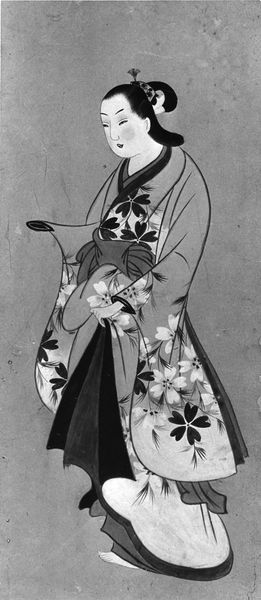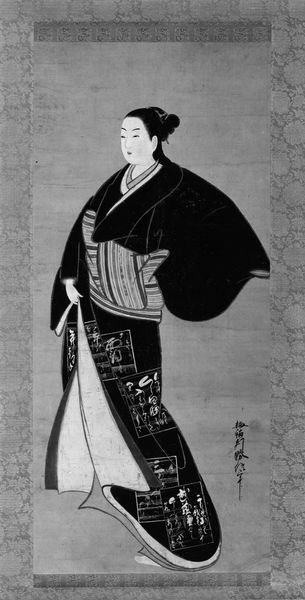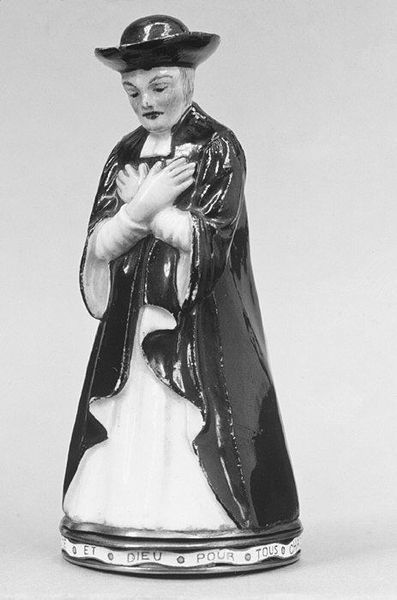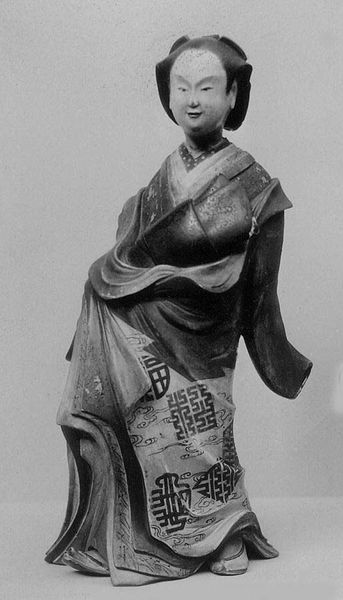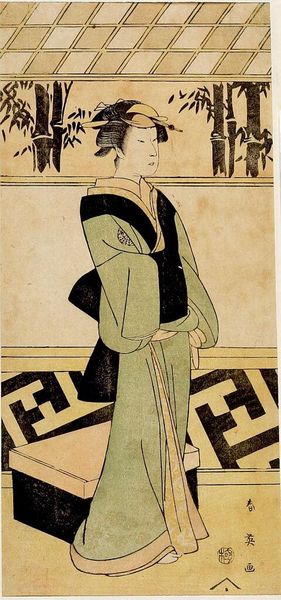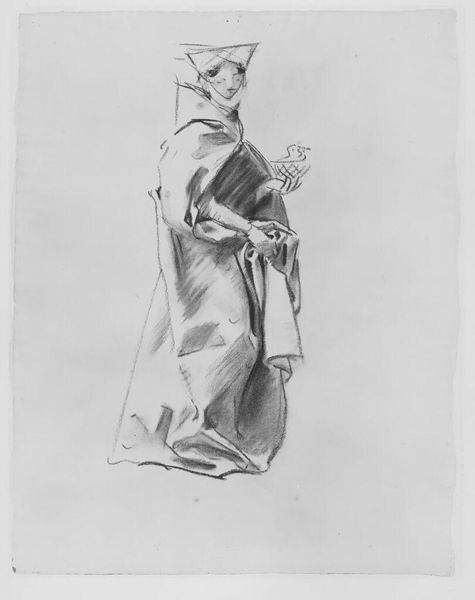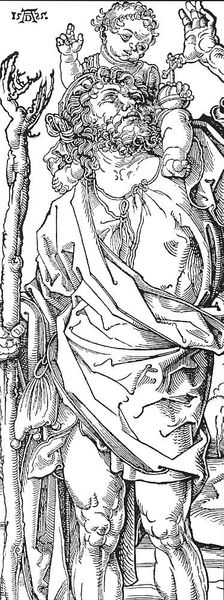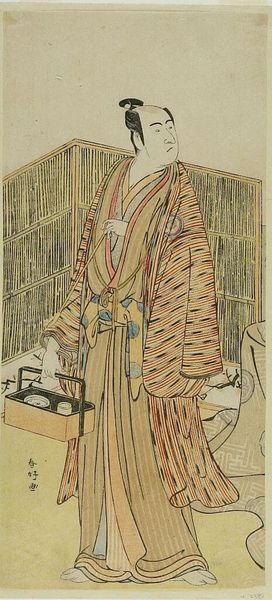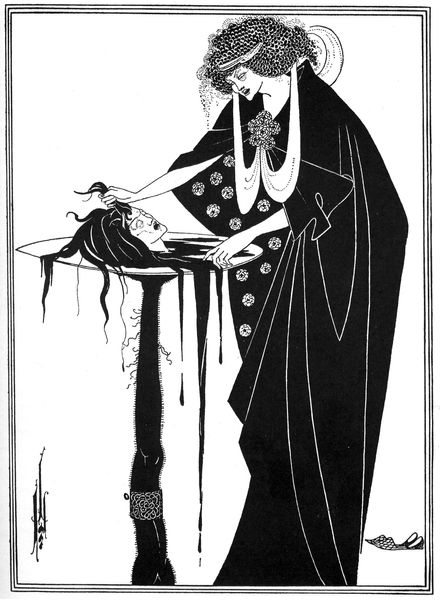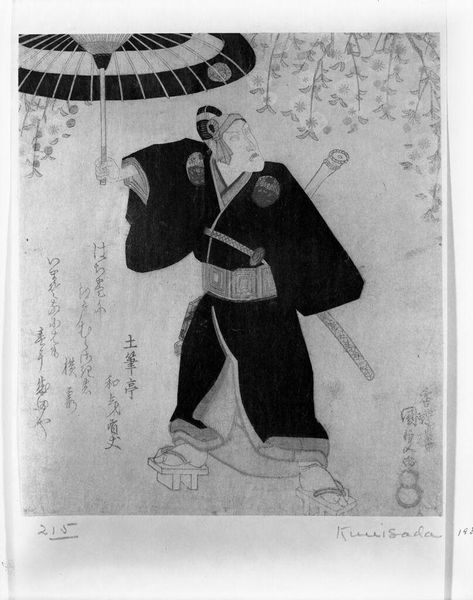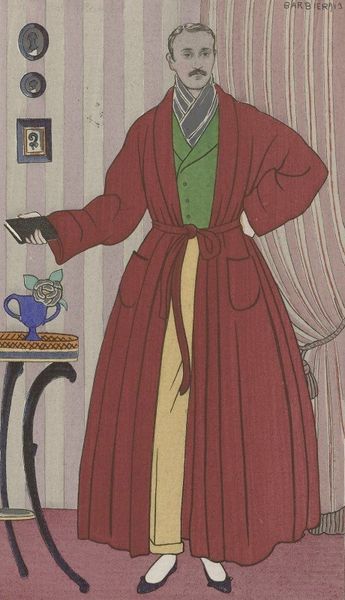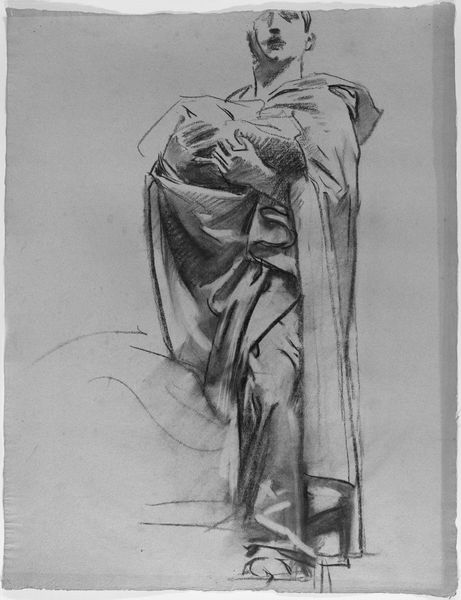
#
portrait
# print
#
asian-art
#
ukiyo-e
#
figuration
#
line
Dimensions: 15 1/2 x 7 5/8 in. (39.4 x 19.4 cm)
Copyright: Public Domain
Curator: Looking at "Beauty with Letter," a striking print by Kaigetsudō, likely created sometime between 1800 and 1868, what's your first reaction? Editor: The bold lines are captivating. It's an arresting image. I am particularly struck by the figure's almost solemn poise. The heavy black robe makes a dramatic statement against the muted backdrop. It projects elegance, yes, but also… a certain world-weariness, perhaps? Curator: That black robe is significant. It’s a visual anchor, certainly, but also a signal. The flowing silhouette is characteristic of the Kaigetsudō school, known for its iconic depictions of courtesans. The choice to render the figure's clothing in this striking manner wasn’t merely stylistic; it was a calculated move that reinforced their unique brand of feminine beauty within ukiyo-e traditions. Editor: So, more than just artistry; it's savvy marketing through visual symbolism! The figure becomes, in essence, a walking advertisement, embodying and propagating a particular standard within a rapidly evolving cultural landscape. It prompts the questions about female representation during that time. To what degree were women shaping their own image? Curator: Exactly. While these prints offered a seemingly diverse representation of women in popular culture, they simultaneously participated in constructing a very particular vision. This iconography perpetuated an elevated view of the courtesan's role in society. It presents a complicated narrative: empowering yet constrained. Editor: That resonates with what is known about print culture and the star system of actors and performers during that time. So how might the letter held in her hand play into this narrative? Is it a personal missive or a further tool to enhance allure, like a staged photograph from a later period? Curator: It’s another layer of narrative, inviting us to contemplate the personal life beyond the beautiful figure presented for public consumption. We might see this figure not just as a representation of beauty but as a businesswoman, a woman navigating a complex societal role in an evolving world, one strategically deploying signifiers of status. The artwork then becomes an artifact embedded within its culture, allowing us glimpses of complex female agency at a specific moment. Editor: The print, by documenting that strategic deployment, helps to reconstruct this vision for audiences centuries later. That bold black robe has quite a lot to tell. Curator: Indeed. The careful observation reminds us of the depth encoded in seemingly simple images, waiting to be unpacked.
Comments
No comments
Be the first to comment and join the conversation on the ultimate creative platform.
